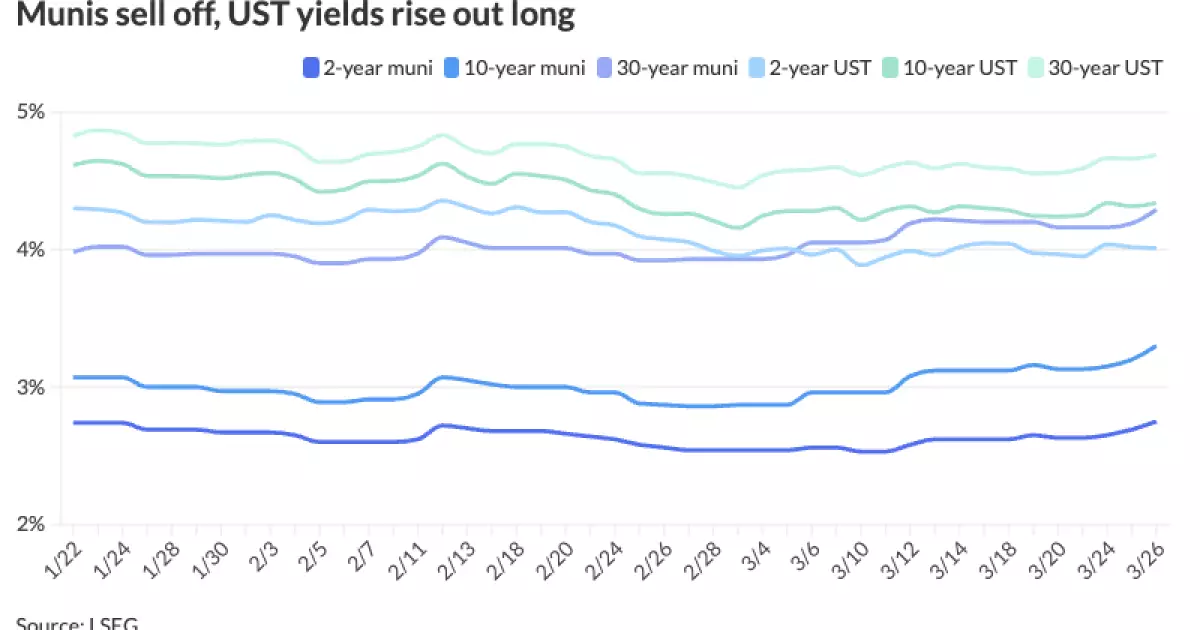7 Disturbing Trends in the Municipal Bond Market You Need to Know

The municipal bond market is at a tipping point, facing a myriad of challenges that are reshaping its landscape. Recent trends indicate that municipalities are struggling with rising yields, while investors grapple with the implications of shifting economic policy and market conditions. It’s not just about numbers—it’s about the future of public finance and, by extension, the communities depending on these bonds for their development and growth. Amidst this volatility, it’s essential to look beyond the facades of traditional financial metrics and assess the broader implications of these trends.
Reversal of Fortunes: Yields on the Rise
For the second time this month, municipal bonds have experienced substantial selling pressure, with yields witnessing double-digit increases. The consequences of rising U.S. Treasury yields have reverberated through the municipal landscape, showcasing a complete turnaround in investor sentiment. The sharp cuts in municipal bond yields of up to 12 basis points serve as a stark reminder of how quickly market conditions can change, raising questions about the stability of municipal finance. The investment community should be on high alert; a tightening environment generally fosters scrutiny of cash flows and credit risk.
According to data from Municipal Market Data, the two-year municipal-to-Treasury ratio stood at a concerning 69%, while the 30-year reached 92%. These figures illustrate a growing disconnect between municipalities’ financial environments and the broader economic factors influencing Treasury yields. Investors ought to ponder: Are these ratios sustainable in a risk-averse environment?
Liquidity Strains: An Investor’s Nightmare
One of the more alarming issues emerging from current trends is the liquidity strain investors are facing. This market’s flow has shrunk abysmally, leading to wider credit spreads that are becoming increasingly difficult to navigate. James Pruskowski from 16Rock Asset Management aptly notes that “liquidity is as strained as it has been in a long time.” In such an environment, the ramifications of illiquidity can be severe, prompting a sense of urgency among investors attempting to tread water amid turbulent economic conditions. This is not market volatility; it is market instability.
Secondary traders are feeling the pinch, not only in terms of restricted cash flows but also in declining investor interest. Pruskowski’s assertion that caution encapsulates the broader sentiment is troubling and indicative of the market’s precarious situation. The once reliable bond market is becoming a risky game for those who do not tread carefully.
The Illusion of Recovery Amidst Macro Risks
The recent weakness in the municipal sector isn’t merely a freak incident; it is rooted in an intricate web of macroeconomic headwinds. Policymaking combined with fluctuating tariffs and burgeoning inflation levels are just some of the factors creating uncertainty. This is exacerbated by evolving economic data, making it hard for investors to interpret the underlying risks and returns accurately.
The prospect of a market correction looms large, raising eyebrows about where we might head next. Pruskowski underscores this point well when he remarks that dislocation breeds opportunity. Yet, how many investors have the appetite for risk in such a fraught atmosphere? It’s a classic conundrum: taking the leap of faith for potential higher yields against significant economic headwinds can be a daunting proposition for many.
The Lure of the Primary Market: Opportunities Amidst Challenges
While secondary trading faces a barrage of challenges, the primary market offers glimmers of hope. Deals like the $378.695 million from Texas A&M University’s Permanent University Fund exemplify how certain issuers can still command market attention. In contrast, the availability of cash in the market demonstrates that demand still exists—albeit for select assets.
However, one must critically assess why these specific issuers remain attractive in a shrunken market landscape. It boils down to the fundamentals of reputation and reliability. Well-known entities may still find investors interested, but thus far, they have had to navigate increasingly complex spread dynamics—pointing to an evolving appetite among potential bondholders.
Valuation Turbulence: A Sign of Caution or Opportunity?
Market valuations have begun to diverge from historical norms, and while this offers a window for potential investment, it also raises a clarion call for caution. Pruskowski’s outlook that current re-pricing may serve as an indicator for a potential turn hints at a deeper complexity—the market may oscillate between overshooting and a carefully calibrated adjustment.
With the timing of such a turn uncertain, investors must strategically position themselves for either outcome. Patience is paramount, yet it must be tempered with a keen understanding of market fundamentals and shifts. In a marketplace shaken by uncertainty, making hasty decisions may prove disastrous.
The underlying reality is that investors need to navigate a complicated palette of financial instruments. The potential for disruption from macroeconomic conditions cannot be ignored, but neither can the opportunities that arise from dislocation. For those willing to engage thoughtfully, this market could yield promising rewards—provided they proceed with the diligence such a turbulent environment demands.





